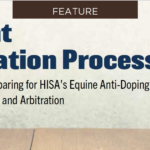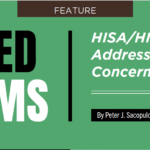Peter Sacopulos, J.D.
Owners and trainers have historically experienced difficulty finding American workers to fulfill semi-skilled jobs on the back side of race tracks. A new proposed ruling governing the H-2B Visa Program may make that task all the more difficult.
The H-2B Visa allows beneficiaries to work in the United States on a temporary basis. This is a temporary work Visa based on a one time, seasonal, peak or intermittent employer need. An advantage of the H-2B Visa is that it does allow the beneficiary to perform work, on a temporary basis, at multiple or different locations. To secure the H-2B Visa, the applicant must also, currently, obtain a Temporary Labor Certificate. The H-2B allows admission for up to one (1) year, but the Visa may be limited by the validity of the labor certificate. The H-2B Visa is subject to extension past the initial year and may be extended up to a total of three (3) years. Like the H-1B Visa, the number of H-2B Visa issued each year are limited as there are far more applications received than visa’s issued.
By way of background, the H-2B program, prior to 2009, utilized a “labor certificate” process. Then in January of 2009, a final rule governing the H-2B program went into effect that replaced the “labor certificate” process with the an “attestation based” labor process. This change, the department of labor argued, was made to make the H-2B program more efficient while still affording American workers protection against foreign workers. The Obama administration has had and continues to have serious concerns relative to the “attestation based” labor process. It does so because it believes the current rule governing the H-2B Visas does not provide adequate protection for American or foreign workers.
In March of this year, the Obama administration, by and through the Department of Labor, issued a notice of proposed rulemaking concerning the H-2B temporary guest worker program. According to the proposed rule adopted, there will be significant changes to the H-2B program. Part of those changes would involve a roll back of many of the provisions of the 2009 rule. Specifically, the proposed rule would require employers to provide documentation that they have taken appropriate steps to recruit U.S. workers, rather than permitting employees to attest to such compliance. Additionally, the proposed rule would reinstate the role of state work force agency in providing expertise on local labor market conditions and recruitment patterns. Also, the proposed rule would increase the amount of time employers must try to recruit American workers. The proposed rule also includes extending H-2B program benefits to workers employed alongside those H-2B workers such as reimbursement of transportation cost and other benefits as well as giving the Department of Labor’s Wage and Hour division independent debarment authority. Finally, the proposed rule would create a national job registry for all H-2B job postings and prohibiting job contractors from utilizing the program.
The equine industry is facing many challenges including declining purses and track commissions, and the ever increasing cost of owning and a race horse. However, an ongoing concern is finding and retaining good help. As the new proposed rule governing the H-2B Visa program is reviewed, modified and debated, those involved in the equine industry must stay informed and prepare to modify, adjust and comply with any and all changes relative to the temporary guest worker program.
This work is copyrighted and is the exclusive property of the author. It may only be used, in whole or in part, with the express written permission of the author.





